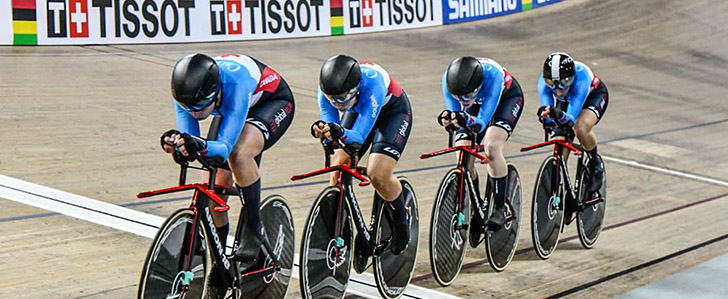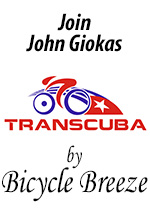June 26/12 11:07 am - 2012 SIRC Research Award Winners Announced
Posted by Editor on 06/26/12
The SIRC Research Award recognizes outstanding sport research in Canada. Acknowledging how sport research benefits the Canadian sporting community is the primary purpose of this award. Congratulations to all who participated.
We would like to extend our sincere thanks and appreciation to all of our judges and to the following sponsors for their tremendous support: CIHR – Institute of Musculoskeletal Health and Arthritis, EBSCO Host and Coaches of Canada.
“The studies and papers submitted to this year’s SIRC Research award demonstrate their passion for the subjects and exceptionally high standard of work being done by Canada’s sport researchers. Canada is a leader in sport research and SIRC is proud to recognize the outstanding work being done by our research community.” Debra Gassewitz, President and CEO SIRC
And the awards go to...
The Impact of Applied Research on Athletic Excellence – High Performance Category:
"The relationship between the extent and intensity of stressful experiences of Canadian minor hockey officials" – Dr. Kim Dorsch -University of Regina
Abstract:
Objective: To examine the relationship between the perceived intensity of acute stressors and the extent to which they occur among officials from four levels of certification in Canadian minor ice hockey leagues.
Design: Two hundred and fifty-five officials (n Level 1 = 64; n Level 2 = 77; n Level 3 = 87; n Level 4 = 27) from two midwestern Canadian provinces completed the Hockey Officials’ Sources of Stress Inventory (HOSSI; Dorsch & Paskevich, 2007). The HOSSI is a 20-item survey which asks officials to indicate on a scale from 0 Never to 9 More than twice per period how often they experienced each of the indicated stressors this season. They are then asked to indicate on a scale from 1 Not at all stressful to 9 Extremely stressful the intensity of their feelings of stress from these ice hockey situations.
Results: Overall, officials reported low to moderate feelings of stress (Ms = 1.42 to 4.52). Three main categories of stressors were apparent: (a) fear of mistakes, (b) verbal and physical abuse from players, coaches, and spectators, and (c) working with a partner official. None of these significantly differed across certification level. The stressors experienced most varied across the certification levels. For example, while threats of physical abuse were relatively scarce in the lower levels (reported by 15.9% of Level 1 officials and 18.7% of Level 2), these incidents did rise to a somewhat alarming rate as the competitive level of hockey increased (27.9% of Level 3, and 44.4% of Level 4 officials reported being threatened at least once per season or more). Spearman’s rho indicated a nonsignificant relationship between the rank order of intensity of the stress felt and the extent to which these events occur in Levels 3 and 4 (rs = .20, p = .39 and rs = -.25, p = .29). These results indicate that the acute stressors which elicit some of the stronger feelings of stress in officials’ at these levels are not necessarily the ones that occur with the greatest frequency. Significant relationships were found for officials in Level 1 (rs = .52, p = .02) and in Level 2 (rs = .54, p = .01) indicating that the stressors that elicit stronger feelings of stress are in fact occurring most often.
Conclusion: Similar to the majority of the literature examining the perceptions of stressful experiences by officials, this study found that the levels of stress experienced by Canadian minor ice hockey officials is low to moderate. While, overall reports of stress do not differ among officials certified in Levels 1 through 4, the types of stressors experienced does. These findings have implications for the types of training methods that could be employed for officials across the certifications levels. For example, officials in the lower levels reported more stressful feelings from verbal and physical abuse while officials in the higher levels were more concerned with making a mistake. While it is important to develop training methods to deal with those situations that are most stressful, it is also important not to overlook the stressors which occur at a higher frequency. If focus is placed solely on the acute stressors, there is a possibility that the impact of the more chronic stressors can impact officiating satisfaction and consequently, retention, particularly in the entry levels of ice hockey officiating.
The Impact of Sport on the Community – Community Category:
"The Health Action Process Approach and athletic identity predict sport participation among individuals with acquired, physical disabilities" – Marie-Josée Perrier, M.Sc. - Queen’s University
Abstract:
Objective: The study had two objectives: to test the fit of the Health Action process Approach (HAPA) model for sport participation among individuals with acquired physical disabilities and to estimate the extent to which athletic identity predicts intentions to engage in sport within the context of HAPA.
Design: Prospective cohort of 82 women and 19 men with acquired permanent disabilities (M age=44.0; M years post-injury=16.2; % in sport=61.7%)
Method: All HAPA indicators and athletic identity were assessed at baseline and sport participation was assessed using the Leisure Time physical Activity Questionnaire for People with Spinal Cord Injury two weeks later. Structural equation modeling was used to test the HAPA model.
Results: The HAPA constructs explained 15% of variance is sport participation and 18% with the addition of athletic identity was added to the model. Instrumental (ß=0.21), affective (ß=0.15), and negative outcome expectancies (ß=-0.20) were significant predictors of intentions to aparticipate in sport, as was athletic identity (ß=0.25). Intention to participate in sport significantly predicted planning (ß=0.54) yet there was no direct relationship between planning and sport participation (ß=-0.008; p>0.05). When the relationship between planning and maintenance self-efficacy was reversed, planning had a significant indirect effect on sport participation through maintenance self-efficacy (ß=0.33)
Conclusion: HAPA constructs may be useful aspects to target within the context of sport promotion and athlete development programs for this population; in conjunction, finding ways to foster athletic identity may further encourage maintained participation.
To read the winning research papers click on the titles above.
Invitation to submit papers for the 2013 SIRC Research Award will be announced in September 2012
| Return to Canadian Cyclist homepage | Back to Top |





